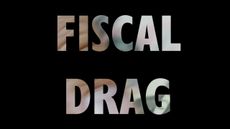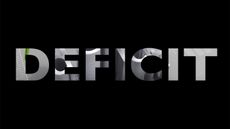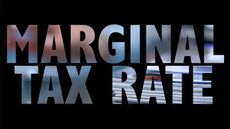What is pension drawdown?
Pension drawdown is a way of taking cash out of your pension pot and funding your lifestyle in retirement. But how does it work and is it the best option for you?


Pension drawdown is a way of accessing your pension pot flexibly, giving you the freedom to spend some of your money while leaving the rest invested.
There are pros and cons of using pension drawdown, and it won’t be suitable for everyone.
It’s important to strike a balance between accessing your defined contribution (DC) pension and ensuring it has the longevity to support you in retirement.
Subscribe to MoneyWeek
Subscribe to MoneyWeek today and get your first six magazine issues absolutely FREE

Sign up to Money Morning
Don't miss the latest investment and personal finances news, market analysis, plus money-saving tips with our free twice-daily newsletter
Don't miss the latest investment and personal finances news, market analysis, plus money-saving tips with our free twice-daily newsletter
One of the good things about drawdown is that if you decide that it’s not for you, you can change your mind and take an alternative approach later on, such as buying an annuity instead.
Here’s everything you need to know about pension drawdown.
What is pension drawdown?
Pension drawdown, sometimes known as income drawdown or flexible drawdown, allows you to access your DC pension savings such as a workplace pension or self-invested personal pension (Sipp), while leaving a portion of it invested, offering the potential for continued investment growth.
On reaching retirement age, which is currently 55 but will be upped to 57 in 2028, you are entitled to take up to 25% of your pension pot as a tax-free lump sum. From then on, you can continue to make withdrawals using drawdown whenever you wish. You can also set up regular withdrawals.
Cash withdrawals made after the initial tax-free 25% lump sum are taxable as earnings in the tax year you take them.
The remainder of your pension pot remains invested, meaning the value of it can go up as well as down.
When looking to set up drawdown, you have two main options - stick with your current pension provider or shop around. Your current scheme may be able to convert your existing plan on your behalf, offering you continuity if you’re happy with the service up to now.
But you could get a better deal elsewhere, including lower fees, a broader choice of investment options or better levels of support, so it’s always worth comparing what’s available.
Consulting a financial adviser could be wise in this scenario - they’ll be able to assess the best way to manage your drawdown withdrawals given your current financial situation, your goals, as well as how you would like the remaining pot to be invested.
Once you’ve set up drawdown, you can still be on the hunt for better ways to manage your retirement money, including changing drawdown provider, changing how often and how large your withdrawals are and the strategy for the remaining pension portfolio.
Is pension drawdown right for me?
Drawdown is not suited for everyone, and there are some good reasons why.
Primarily, keeping your pension pot invested means there is continued exposure to risk. If you’re not happy with the uncertainty associated with investing during retirement, then drawdown may not be the right choice for you.
Similarly, drawdown does not offer a guaranteed income in the same way as an annuity. As mentioned, the income you receive will be dependent on investment performance, so steer clear if you’re looking for something more stable.
If you’re not particularly financially savvy, drawdown could be a burden. It requires a degree of engagement and financial knowledge to make the right decisions. Although you can always seek financial advice, of course.
You also have to consider your own longevity - or how long you plan on living for. With drawdown, there is a risk of you depleting your pot prematurely. It’s crucial to factor this into your decision-making to ensure a drawdown strategy aligns with your desired lifestyle.
Despite the potential drawbacks, drawdown can be an excellent option for certain individuals.
An important factor to consider is the size of your pension pot. Citizens Advice recommends drawdown to those with a six-figure pension fund or if you’ll have enough other regular income from savings or investments, such as from a final salary pension scheme.
Likewise, if you anticipate having higher income needs near the start of your retirement, then the flexibility afforded by drawdown means you can access a larger portion of your pot, perhaps to cover the final few years of a mortgage, before tapering it down to a lower level.
There are good reasons why drawdown makes sense when it comes to legacy planning, too. Any remaining funds can be passed on to your beneficiaries upon death, making it a great alternative to an annuity if leaving a legacy is important to you.
But remember, everyone’s financial situation and retirement goals are unique, so it is vital to fully evaluate your circumstances and seek financial help if you need to. Support can also be accessed through the government’s MoneyHelper scheme, and by having a free Pension Wise appointment.
What are the alternatives?
An annuity offers a guaranteed income for life in exchange for your pension pot. For some, the attraction of knowing exactly how much you’ll be receiving for the remainder of your days is a vital component in planning retirement. But annuities lack the flexibility offered by drawdown.
However, it doesn’t have to be a case of opting for one product over another. A “mix and match” approach could see you use part of your pension to secure an annuity - which could cover your essential living costs for the rest of your life - while moving the remainder of your pension into drawdown to offer flexible income as and when you need it.
Tom is a journalist and writer with an interest in sustainability, economic policy and pensions, looking into how personal finances can be used to make a positive impact.
He graduated from Goldsmiths, University of London, with a BA in journalism before moving to a financial content agency.
His work has appeared in titles Investment Week and Money Marketing, as well as social media copy for Reuters and Bloomberg in addition to corporate content for financial giants including Mercer, State Street Global Advisors and the PLSA. He has also written for the Financial Times Group.
When not working out of the Future’s Cardiff office, Tom can be found exploring the hills and coasts of South Wales but is sometimes east of the border supporting Bristol Rovers.
-
-
 Investment trust discounts hit 2008 levels. Here’s how to profit
Investment trust discounts hit 2008 levels. Here’s how to profitInvestment trust discounts have risen to levels not seen since 2008, here are three trusts looking to buy to profit.
By Rupert Hargreaves Published
-
 A luxury stock to buy at a high street price
A luxury stock to buy at a high street priceInvestors wrongly consider Watches of Switzerland a high-street outlet.
By Dr Matthew Partridge Published
-
What is an investment trust?
Videos “Active” investment funds come in two main varieties, one of which is investment trusts. But what exactly is an investment trust?
By Rupert Hargreaves Published
-
 What is a dividend yield?
What is a dividend yield?Videos Learn what a dividend yield is and what it can tell investors about a company's plans to return profits to its investors.
By Rupert Hargreaves Published
-
 High earners to pay nearly £2000 more in tax due to fiscal drag
High earners to pay nearly £2000 more in tax due to fiscal dragVideos The government froze tax thresholds, which will drag employees into higher tax bands as wages rise with inflation. We explain what fiscal drag is, and how to avoid it.
By Nicole García Mérida Last updated
-
 What is a deficit?
What is a deficit?Videos When we talk about government spending and the public finances, we often hear the word ‘deficit’ being used. But what is a deficit, and why does it matter?
By moneyweek Published
-
 Too embarrassed to ask: what is moral hazard?
Too embarrassed to ask: what is moral hazard?Videos The term “moral hazard” comes from the insurance industry in the 18th century. But what does it mean today?
By moneyweek Published
-
 Too embarrassed to ask: what is contagion?
Too embarrassed to ask: what is contagion?Videos Most of us probably know what “contagion” is in a biological sense. But it also crops up in financial markets. Here's what it means.
By moneyweek Published
-
 Too embarrassed to ask: what is a marginal tax rate?
Too embarrassed to ask: what is a marginal tax rate?Videos Your marginal tax rate is simply the tax rate you pay on each extra pound of income you earn. Here's how that works.
By moneyweek Published
-
 Too embarrassed to ask: what is stagflation?
Too embarrassed to ask: what is stagflation?Videos Traditionally, economists and central bankers worry about inflation or recession. But there is one thing worse than both: stagflation. Here's what it is
By moneyweek Published








